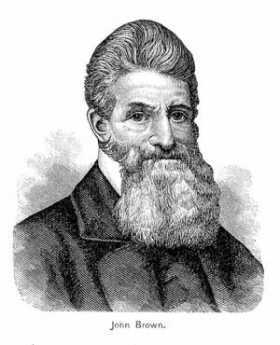Related Topics
Downtown
A discussion about downtown area in Philadelphia and connections from today with its historical past.

Particular Sights to See:Center City
Taxi drivers tell tourists that Center City is a "shining city on a hill". During the Industrial Era, the city almost urbanized out to the county line, and then retreated. Right now, the urban center is surrounded by a semi-deserted ring of former factories.
Tourist Walk in Olde Philadelphia
Colonial Philadelphia can be seen in a hard day's walk, if you stick to the center of town.
Favorite Reflections
 In no particular order, here are the author's own favorites.
In no particular order, here are the author's own favorites.
Sixth and Walnut over to Broad and Sansom
 In 1751, the Pennsylvania Hospital at 8th and Spruce was 'way out in the country. Now it is in the center of a city, but the area still remains dominated by medical institutions.
In 1751, the Pennsylvania Hospital at 8th and Spruce was 'way out in the country. Now it is in the center of a city, but the area still remains dominated by medical institutions.
Railroad Town
 It's generally agreed, railroads failed to adjust their fixed capacity to changing demands. It's less certain Philadelphia was pulled down by that collapsing rail system.
It's generally agreed, railroads failed to adjust their fixed capacity to changing demands. It's less certain Philadelphia was pulled down by that collapsing rail system.
Philadelphia Places
New topic 2017-02-06 20:19:14 description
Rail Station at Broad and Washington
Washington Avenue was called Prime Street before the Civil War and was an important trans-shipment center for the whole country. Rail traffic, coming down from New York and New England, came through New Jersey on the Camden and (Perth)Amboy RR, disembarked, and ferried over Delaware to the foot of Prime Street/Washington Avenue. Passengers then took horse-drawn cabs up Prime Street to Broad, or else they walked. At that point, travelers bound for further South would enter the imposing Rail terminus of the Philadelphia, Wilmington and Baltimore RR, to re-embark. Philadelphia hotel operators hoped they would stay overnight; Philadelphia merchants hoped they would just transact their business locally, then go back home. Taking nine hours from New York, it was an inefficient transportation method by today's standards, but the Prime Street interruption served local economic purposes, which Chicago keeps in mind, even today.
Sketch map showing the area between Philadelphia and Baltimoreindicating drainage, cities and towns, roads, and railroads.
Consolidated February 5, 1838.
The interruption also worked the other way, inducing Southerners to go no further North with their business, thus strongly contributing to pro-Southern sympathies before the Civil War. Philadelphia was indeed the most northern of the Southern cities until the 1856 Republican convention (at Musical Fund Hall) started to remind other Philadelphians that the anti-slavery Quakers perhaps had a point. Even so, pro-Southern feeling in Philadelphia was wide-spread, even in the early months of the war.

|
| John Brown |
For example, in 1859 John Brown's body was brought forth on the PWB railroad, precipitating a pro-Southern riot at the Broad and Prime Station. There was a second riot the following year.
During the Civil War itself, the PWB railroad was a major military transport, carrying military supplies and troops to the battles, and bringing the many wounded troops back home for treatment. Quite a large military hospital was built across Broad Street from the rail station. All in all, the corner of Broad and Prime was a major center of the war, and may well have been one of General Lee's objectives when he launched the invasion that got stopped at Gettysburg.

|
| B& O Railroad |
After the Civil War was over, attention was finally paid to the need for better North-South rail transport along the Eastern Seaboard. Up to that time, European investment had pushed American railroading in an East-West direction. The Baltimore and Ohio were aimed at the Mid-West, while the New York railroads aimed at Chicago and beyond. Local politics in the seaboard cities tended to keep the competitors from linking and thus potentially capturing trade between the manufacturing North and agrarian South.
The Philadelphia, Wilmington, and Baltimore was the key link in the series of mergers which created the dominant Pennsylvania Railroad. Bringing northern traffic in through North Philadelphia to the new 30th Street Station,

|
| 30th Station |
and then linking it to the stub of the P, W, BRR, the way was being paved for Ascella Express trains to shoot from Boston to Washington, perhaps eventually to Florida. The side-track from West Philadelphia to Broad and Washington was allowed to wither, and of course, the whole Camden and Amboy RR became scarcely more than a trolley line All that was left as a challenge to the Pennsy was to get past B and O obstructionism in Baltimore. This last step was finally accomplished with the discovery of some legal loopholes related to an existing right of way for a local commuter line in Baltimore, where permission for a branch line was broadly interpreted, and a surprise tunnel dug to link it up to the other parts of the Pennsy. Amtrak passengers nowadays usually move through the Baltimore tunnel systems without noticing them, but occasionally a train breaks down inside the tunnels. Then, they prove to be rather dark and damp as the passengers with their laptops are transferred to another train.
Originally published: Thursday, November 13, 1997; most-recently modified: Monday, June 03, 2019
| Posted by: Charles Shattuck | Dec 30, 2007 9:13 PM |